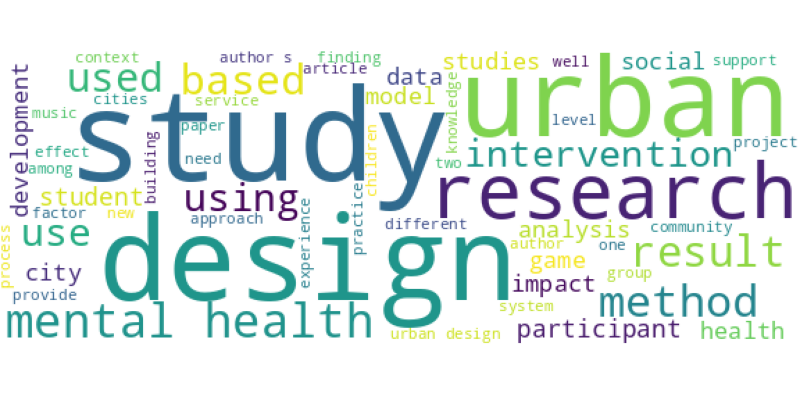| Id | 2968 | |
| Author | Urech P.R.W.; Mughal M.O.; Bartesaghi-Koc C. | |
| Title | A simulation-based design framework to iteratively analyze and shape urban landscapes using point cloud modeling | |
| Reference | Urech P.R.W.; Mughal M.O.; Bartesaghi-Koc C. A simulation-based design framework to iteratively analyze and shape urban landscapes using point cloud modeling,Computers, Environment and Urban Systems 91 |
|
| Link to article | https://www.scopus.com/inward/record.uri?eid=2-s2.0-85118597417&doi=10.1016%2fj.compenvurbsys.2021.101731&partnerID=40&md5=e0dede7f910feac1f70fff8c410d37b6 |
|
| Abstract | The topic of this paper evolves on the discourse of digital modeling in landscape design. Current design methods stagger to address physical forms and dynamics present in the environment. This status quo limits possibilities to integrate scientific evidence when developing spatial and aesthetic configurations in urban landscapes. Remote sensing technology such as laser scanning measures physical forms to reproduce them as geo-specific digital 3D models, while dynamic simulation is widely used to predict how scenarios will perform under given conditions. However, there is still a need for a holistic design process that is capable of integrating both the measured physical forms and physical dynamics. This paper presents a novel framework using point cloud modeling to shape design scenarios that are iteratively evaluated for their performance. The proposed framework is demonstrated through a case study in Singapore. New spatial configurations are tested for the site through an iterative and comparative analysis of the design performance. The case study exposes (1) a site-specific design approach by iteratively modeling a laser-scanned point cloud model, (2) a workflow to convert the geometric data from the point cloud models into voxels and meshes, (3) an integration of computational fluid dynamics (CFD) simulation during design development as per-point attributes, and (4) a comparison of the configurations to identify best performing scenarios. This design framework can support city managers, planners, urban and landscape designers to better inform their decision-making process by relying on accurate scientific feedback. By guiding the design process with the consideration of the built environment as a complex adaptive system, it will be possible to improve how open spaces and ecosystem services perform in cities, and to design landscapes that can mitigate dynamic events such as urban heat islands. © 2021 The Authors |
|
| Keywords | Singapore Southeast Asia ; Cloud computing; Computational fluid dynamics; Data handling; Decision making; Ecosystems; Remote sensing; Urban growth; Cloud modeling; Design frameworks; Design performance; Landscape design; Laser scanned; Laser-scanned data; Point-cloud modeling; Point-clouds; Urban landscape; Urban landscape design; computational fluid dynamics; digital image; heat island; holistic approach; image analysis; satellite data; urban design; urban development; urban planning; Iterative methods |
Wordcloud:



